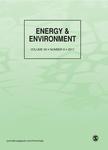版权所有:内蒙古大学图书馆 技术提供:维普资讯• 智图
内蒙古自治区呼和浩特市赛罕区大学西街235号 邮编: 010021

作者机构:Jiangsu Univ Sci & Technol Sch Econ & Management Zhenjiang Peoples R China Hohai Univ Business Sch Changzhou Peoples R China Tianjin Univ Coll Management & Econ Tianjin Peoples R China Soochow Univ Dept Econ Taipei Taiwan Soochow Univ Dept Econ 56 Kueiyang StSect 1 Taipei 100 Taiwan
出 版 物:《ENERGY & ENVIRONMENT》 (Energy Environ.)
年 卷 期:2024年第35卷第4期
页 面:2198-2227页
核心收录:
学科分类:0830[工学-环境科学与工程(可授工学、理学、农学学位)] 08[工学] 0807[工学-动力工程及工程热物理]
基 金:Humanities and Social Sciences Foundation of Ministry of Education in China [22YJCZH232] Jiangsu University of Science and Technology
主 题:Spatial pattern driving factors interprovincial water use SNA LMDI
摘 要:China, the world s largest developing country, faces a severe water shortage. As the government has set a goal of limiting water use to 7000 x 10(8) m(3) by 2035, how to control the increase in water use will be a thorny issue for China. Unbalanced and uncoordinated regional socio-economic development is an important feature of China. Research on the interaction between provincial water use will help to optimize the rational allocation of water resources and control of water use. In this paper, SNA (social network analysis) method is first used to explore the characteristics of social network relationship between inter-provincial water use, construct a two-stage model of SNA-LMDI, and decompose the driving factors of inter-provincial water use evolution. We found the following points. (1) From 2000 to 2018, the spatial correlation network structure of water use is tending to be stable, and the stability and risk resistance of the whole network are enhanced. (2) From different angles to quantify the centricity analysis, can be found that eastern provinces located right in the heart of water network, obviously larger impact on water resources utilization in other provinces, Shanghai and Beijing is located in the former two, and central and western provinces in the edge position. (3) The national water use spatial correlation network can be divided into four blocks, net beneficial block, bidirectional spillover block, brokers block, and net spillover block. (4) Technological progress and industrial structure adjustment were the primary and secondary factors inhibiting the increase of total water use, while income increase was the main factor promoting the increase of total water use, population scale expansion had a weak role in promoting the increase of total water use. Some policy implications are put forward related to our research conclusions.